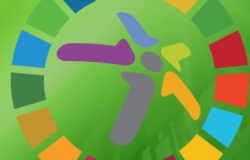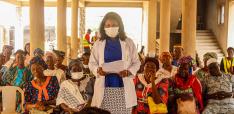Making Academia an Open Book? Bibliodiversity and Open Access Publishing

Victoria Baskett, Rebecca Heminway and Paul Reilly explore whether open access publishing might democratise the publication and dissemination of academic research.
By the end of 2018, the International Telecommunications Union estimated that 51.2 percent of the world’s population (3.9 billion people) were using the internet. The strongest growth in use has been in Africa (rising from 2.1 percent in 2005 to 24.5 percent in 2018), whereas internet penetration in Western Europe has appeared to plateau in recent years (estimated at 84.2 percent in 2018). These statistics reflect how the digital divide has evolved over the past two decades. Early definitions, which tended to focus on the lack of access to the internet in second and third world countries, have given way to more recent work emphasising the gap between those able to benefit from these technologies and those unable to do so. Clearly these types of digital divide has the potential to reinforce and even deepen inequalities in many different aspect of society, including Higher Education where there has recently been much debate about the future of paywall academic journals in the wake of the burgeoning open access movement. Research funders and assessment exercises, such as REF 2021, have went as far as to stipulate that researchers must deposit their work in open access repositories in order to maximise its reach and impact.

Academic journals remain an important platform for the publication and distribution of academic research. If the information in these journals was not published, scientific development would be stunted and many experiments would be repeated - academics would have nothing to refer to, or any indication of where to improve or develop from previous research.
Journals vary widely in terms of their size and status within their respective disciplines; Prestigious, high impact ones tend to receive higher levels of citation from academics across the world, while others have smaller readerships and have lower impact factors.They can be accessed via commercial or non-commercial journal-hosting sites, with some combining both methods. Large platforms, who index and provide search abilities for journals and the work published in them, tend to be commercial sites. Based within the Global North, these include well-known brands such as Elsevier and SAGE that charge expensive subscription fees to universities in order for their staff and students to access these journals. This is in contrast to non-commercial sites such as AJOL in South Africa, which is a fully ‘open source’ platform that publishes scientific research without using a paywall.
However, the persistence of digital divides mean that not all Higher Education Institutions, nor their staff or students, can access these journals. Many have limited financial resources and technical infrastructures (such as computers or an internet connection), while others may not have English (the main language of these journals) as their language of instruction.
This results in the production and distribution of academic knowledge being dominated by the Global North. Those without access are often left behind, exacerbating existing digital divides in the educational sector.
Although academics from poorer countries cannot always access this information, they still have important contributions to make to their respective disciplines. Consequently, academia itself has joined the calls for greater ‘open access’ to research in order to address this divide.
The concept of bibliodiversity hails from Latin America and refers to the need for a culturally diverse and balanced range of published materials for generating knowledge. It is said to be threatened when there is an undue focus (or ‘overproduction’) on a limited number of publications, which are often commercial interests. With journals being increasingly accessed online, advocates suggest that publishing platforms should work collaboratively, increasing access to knowledge. Hence, open source platforms like AJOL have been launched with the intention of promoting these open forms of knowledge, albeit that many have a limited budget.
Increased bibliodiversity has the potential to address this educational and informational digital divide, allowing for research to be more widely accessed and added to on a global scale. This provides greater opportunities for the development of new theories and discoveries, allowing more researchers to read about and improve upon others’ work. In short, the concept promotes the production and publication of research from geographical areas which are currently under-represented in the leading paywalled, commercial journals. This is why open access to research is so important. Not only does it improve the development of research itself, it helps reduce digital divides in Higher Education.
Open access journals alone will not address inequalities between researchers and institutions based in the Global North and South. For many, the question of digital divide is not one of access to academic literature, but to the internet itself. However, as discussed above, the rapid growth of internet use in Africa suggests that these divides are shifting. So, while we work to reduce digital divides and enable more people to access ICTs across the globe, let us also work to increase the number of open source journals and platforms available to researchers. This will enable more people from the Global South to access free, high quality academic research, a prerequisite for addressing global digital divides.
This post is part of a series from the Global Leadership Initiative's team of eight students at the The World Summit on the Information Society 2019 from 8th to 12th April. All their outputs will appear here.


